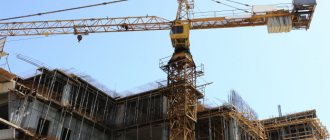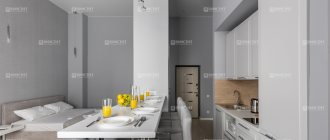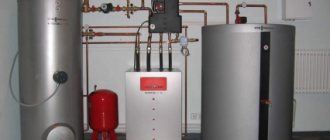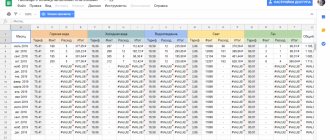What is SOI in housing and communal services
Many residents of apartment buildings will see different values in the new payment bills instead of the usual ODN. There will now be cold water supply SOI, hot water supply and electricity. But no one likes to pay for incomprehensible abbreviations, so it’s worth figuring out what it is and why. If everything is clear with SOI Electricity, then the remaining two do not look so accessible.
What is SOI HVS
Having received the payment slip, you can find a new line there - SOI in housing and communal services, it’s worth finding out what it is. SOI stands for contents of common property.
Accordingly, SOI DHW means the provision of hot water, which is used for general house needs. Cold water is indicated in payment documents with the following line cold water.
People living in an apartment building have long been accustomed to being charged for electricity, water and wastewater disposal, which are used for general household needs.
Owners do not pay for the use of sanitation and heating outside their apartments; there are no standards for these indicators, although the house is fully heated in winter. Any home needs its own hot and cold water, electricity and the ability to dispose of wastewater. These amounts are not taken out of thin air; they are carefully calculated.
For what purpose were the changes made?
Lawmakers expect that now all management companies will take home expenses more seriously. After all, any difference in the SOI column for utilities will be paid by the HOA or the building management company. Residents cannot be charged more than the standard. If the amount collected from residents differs from the amount that needs to be paid, these organizations will have to pay it.
According to the new standards, legislators expect that now the house will be in perfect order, because management companies will begin to actively combat the theft of electricity, conserve electricity, monitor possible leaks, and also identify those who do not pay on an ongoing basis. No company would want to give people the opportunity to steal at their own expense.
How will this affect payment?
Most of the standards and payments have not changed at all. Most of all the changes affected the SOI in the MKD for electricity. According to the new rules, now, if a common house has an attic and a basement, then you have to pay for their area too. Previously, there was no need to pay for these premises. Now payments for general household needs may increase significantly.
To prevent this, HOAs must announce a general meeting and change the calculation procedure to calculation based on instrument readings. Otherwise, charges for the use of utility resources will take into account consumption standards.
This means that the technical passport of the house is checked. If it indicates that utility networks run through the attic or basement, then they will be included in the receipts in the form of an increased payment amount.
If you install metering devices, they will be able to record whether the electricity consumption actually occurred.
Important! Now these payments do not apply to benefits for disabled people of all groups. This means that SOI electricity and water use will have to be paid at full tariff, since they are no longer utility bills. The essence of the payment has not changed.
How is it calculated
It is worth trying to calculate the SOI for cold and hot water, electricity. All these general needs of the economy have standards that vary in each area. It is not difficult to decipher this formula; its general form looks simple.
The approved consumption standard must be multiplied by the total area of all residential premises - entrances, attics, etc. This amount is then multiplied by the area of the premises owned and divided by the total area of all residential and non-residential premises.
The areas that the house has can be viewed in the technical passport. The resulting amount is multiplied by the housing and communal services tariff for water supply or electricity consumption.
Important! The general calculation of energy costs is not included in house services. It is indicated in the utilities and is paid at the standard rate for the apartment.
The dispute about how and according to what standards to pay began in 2015, when legislators decided to change the taxation process.
For the entire year following it and into 2021, each common house had the right to organize a meeting and decide how payment would be made.
The formula should look like this:
X = A* B*C: D
A – general standard for resource consumption;
B - the house has a certain area of both residential and non-residential premises indicated in the technical passport. This amount is indicated during the calculation.
B - The area occupied by the owner’s apartment;
D - The total area of all residential and non-residential premises in the house.
If the resulting calculation does not correspond to what is indicated in the payment order.
For the house and its needs, residents should not pay more than the standard, the total amount of which does not exceed the amount obtained in the calculations. If questions or inconsistencies arise, the law is supposed to go directly to the management company and ask for clarification there.
There they must show the calculation formula, the area that the common house has, and also explain the origin of the numbers in the payment document.
If the HOA or management company refuses to provide an explanation, then citizens have every right to contact the settlement center or the city executive committee. If for some reason they were unable to provide an explanation, then you can go to the prosecutor’s office or the housing inspection. You should not ignore the growing numbers, because the building does not increase in size and the standards do not change.
The house and the total amount of its needs can be smaller every month if the management company operates as efficiently as possible, treats consumed power responsibly, supplies metering devices on time and correctly calculates payment amounts.
Source: https://okommunalke.ru/uslugi/chto-takoe-soi-v-zhkh
Friendly LLIN
Residents of apartment buildings have already gotten used to the fact that the common house needs in receipts have changed their name - now it is a payment for the maintenance of the common property of the house. From June 1, some changes regarding the accrual of these same SOIDs came into force, so the numbers in payments may change from July 1. But not necessarily in the direction of increase. In accordance with Decree of the Government of the Russian Federation dated December 26, 2016 No. 1498, the Regional Tariff Service, from June 1, 2021, approved new standards for the consumption of cold, hot water and electrical energy for the purpose of maintaining the common property of apartment buildings. At the same time, the SOID standards for cold and hot water remained at the same level, but for electricity they changed. “Electricity standards for all groups of buildings without elevators were lowered,” explained Deputy Minister of Housing and Communal Services of the Rostov Region Valery Bylkov. — In buildings with elevators, the standards have increased by 20-30%, but this should not have a noticeable impact on citizens’ pockets. The most advantageous position will be at home where LED lighting systems are installed and there are no other electrical appliances on the “common territory.” Such houses - and there are quite a few of them in the Rostov region - will pay only 12% of the previous standard; the reduction has occurred by 88%. So this is good news for a large number of Don residents. “However, before July 1, home owners, together with property managers and resource supply organizations, need to draw up an act stating that LED lighting has been installed in the house, and then charges will be made at a reduced rate,” Valery emphasized Bylkov.After the calculation of common house consumption of water, heat and electricity began to be carried out according to the standard, the population breathed a sigh of relief: the amounts in bills decreased, because now the management company is obliged to pay the difference between the readings of individual meters and the common house one, the readings of which go beyond the standard. And not residents, as before. For management companies, this is a good incentive to work: any measures to improve the energy efficiency of the house are reflected in the amount of this difference, and therefore on the budget of the management company. “It is, of course, more profitable for people to pay within the standard,” notes the deputy minister. - But this does not negate their responsibility to each other - an honest payment for the resources consumed will make it possible to restore order in every home. Technologies now make the process as transparent as possible - there are even meters that allow representatives of the house council, the chairman of the HOA or management company employees to collect readings remotely, without entering the apartment. Of course, this costs money, but many Don apartment owners are already making a choice in favor of new technologies. Soon the “injustice” will be corrected in the legislation regarding those apartment owners who have put all the engineering systems of the house in order and were able to build real honest good neighborly relations, that their volumes of consumption of utility resources are much lower than the standards, but management companies still continue to calculate their payment for SOID according to consumption standards. - It turns out that these people are now paying more than they spend on water, heat and electricity. Already in the second reading in the State Duma there is an amendment to the law that will allow residents, by decision of the general meeting, to pay for LLIN based on the amount of actually consumed utility resources. This way, they will save even more,” Valery Bylkov is sure. However, in case of overspending, the restriction by the standard remains, which means additional costs for management companies. They also face additional expenses if the houses under their management have not yet installed general meters for metering the consumption of utility resources - all the conditions for installation are there, but the devices are not there. In such cases, an increasing factor of -1.5 is applied to the standards for maintaining the common property of the house. But let the employees of the management company not try to mislead you: only they have to pay this difference, not the apartment owners, from whom they have no right to take more than the fee accrued based on the standard. From June 1, the standards for the consumption of cold, hot water and electricity for maintenance purposes have changed. of common property in apartment buildings: in buildings without elevators, electricity consumption standards have been reduced; in buildings with elevators, they have increased by 20-30%. Cold and hot water remained at the same level.***photo: The higher the energy efficiency of a house, the less it costs to maintain it. For both residents and the management company
In detail about CG consumed for the purpose of proper maintenance of the property of owners in MKD (SOID)
They say to understand means to simplify. I'll try, but it's a bit difficult. When you yourself seem to understand everything, but you begin to explain and observe 75% of the “water” in your monologue.
SO
, in 2021, services to maintain this property in
proper condition
(SOID - maintenance of common property) were also added to the list of public utilities (CS), namely:
Hot and cold water supply (DHW and cold water supply) – Wastewater disposal (sewage) – Electricity supply.
And this means that paying the owner
they will now be used by
management companies/managers, HOAs/housing cooperatives
, and even if the utilities on individual meters are handed over directly to the RSO. The only exception is for direct management, there directly in the RSO.
Overall, all of these services are designed to maintain the viability of the home as a whole.
body. For example:
This is the electricity that allows elevators to operate and light bulbs in the entrance to light. This is the water that is taken to wash the stairs or water the flower beds in the yard, etc.
The charging scheme for them is simple - the volume of general house needs per specific apartment in the house is multiplied by the tariff.
The infrastructure of houses is different, so the following methods are proposed for determining the volume of utility resources for LLINs.
Method
1
When there are no meters - According to the standard
Method
2
If there is a common house meter (ODPU) - According to a common house meter.
It will not be possible
to mathematically isolate the costs of LLINs from the total volume , so payment is calculated
according to standards .
Therefore, at the end of the year,
an adjustment is made
based on the fact that the resource was used.
The actual volume
of communal resources consumed for the maintenance of common property
is determined
by subtracting individual consumption in apartments and non-residential premises (offices, gyms, shops on the 1st–2nd floor) from the readings of a common building meter,
and
for apartments
where meters are installed, metering device , and for apartments where
there are no meters - the standard.
How to distribute the obtained result among all owners?
To do this, it is divided
by the total area of all residential and non-residential premises in the house and
multiplied
by the total area of the premises owned by the owner.
At the same time, the obtained data is analyzed and if they indicate that the fact exceeds the standard, then measures are taken to reduce consumption.
And since this excess (fact over standard) arises, methods as old as time to minimize it are proposed everywhere:
1. Verification of instruments. 2. Elimination of illegal connections.3. Drawing up acts of actual residence in apartments without meters.4. Application of increasing coefficients.
But the main question is: Where to put it and who will pay for this excess!?
And it
has not been finally resolved
to this day. Everyone (MC/HOA... ..) solves it to the “measure of their” depravity, that is, they shovel it on other expenses or simply hide the fact of losses, otherwise “delaying the end.”
Method
3
The owners of the premises at the general meeting (GMS) decide to pay immediately after the fact
based on the difference in the ODPU readings and the amount of accruals for apartments and non-residential premises.
In this case, standard consumption does not apply
and if an overconsumption occurs, it will have to be paid in full.
Way
4
The owners of the premises at the general meeting (GMS) decide on payment based on average monthly consumption for the previous year
with making
adjustments
based on actual consumption.
Method
5
Prepared for future generations and new buildings. This is when telemetry (remote access) is installed in the house. Then we carry out accounting and accruals according to actual readings and for this there is no need to conduct OSS.
The number of CDs in residential and non-residential premises is determined by automatically transmitted data (GPRS, Wi-FI, mobile phone radio signal, Internet..).
Now this can be “cranked out” through a major overhaul, but with a high degree of probability you will be supplied with expensive equipment that requires expensive maintenance... in general, “the game is not worth the candle.”
But that's it. Choose a method that is convenient for YOU, delve deeper into it and implement it.
Thank you for your attention.
If you were interested, please support by liking and
subscribing .
Source: https://zen.yandex.com/media/zhkkh/doskonalno-o-ku-potrebliaemyh-v-celiah-nadlejascego-soderjaniia-imuscestva-sobstvennikov-v-mkd-soid-5dfc7121028d6800ad66a56c





